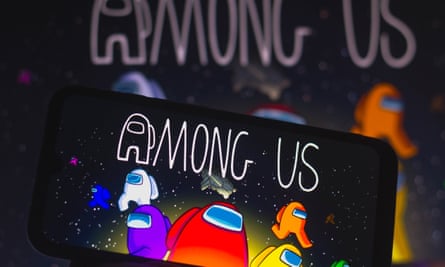Twitter might actually get its act together
Twitter has an unfortunate reputation as the punchbag of social media. It has failed to deliver the huge returns of bigger rivals such as Facebook and Facebook-owned Instagram, it hasn’t been the cool new network for more than a decade and even its own most dedicated users love to drag it to oblivion.
Investors have been similarly wary of the 300m-strong social network – it has lagged behind rivals in terms of features, revenue per user and for monetisation tools. Lots of people rely on Twitter to make at least part of their income, but tend to monetise it off the network, with no cut for Twitter.
That might be starting to change. Twitter is trialling a “super follow” feature for people to support users they particularly like on the site, has bought the newsletter platform Revue and is integrating that with Twitter and has also bought up some other monetisation tools. With the departure of its part-time chief executive and co-founder Jack Dorsey, Twitter might be worth a second look in 2022.
NFTs will remain hyped to oblivion, some people will lose their shirts
If you managed to avoid any mention of NFTs – short for non-fungible tokens – online in 2021, you spend your time in far less nerdy corners of the internet than we do. Non-fungible essentially means that one token isn’t identical to the next one. So for a cryptocurrency, one bitcoin is no different from another bitcoin. For an NFT, each token is unique.
That means NFTs have become popular as a way to record blockchain “ownership” of a particular piece of digital art or memorabilia. These have included clips of NBA scoring shots, gorilla avatars and generative art.
Advocates say the ability to own digital art enables people to make ongoing creative work from the NFT they own, perhaps using it as the art for their company logo, adding it to existing intellectual property or even making a Gorillaz-style NFT avatar band.
Sceptics here note that all of this was and is possible without any use of NFTs at all: it is what intellectual property rights already exist to enable, after all. In practice, owning an NFT only proves you own the NFT – an entry on a blockchain somewhere saying you “own” whatever it links to. That may or may not be true legally, depending on how scrupulous the seller was.
If people are buying NFTs and driving up the price because they truly value the artworks on offer, then the gold rush could prove sustainable. If people are buying them solely because they think someone else will buy one for more, lots of people will lose big. One special thing to watch out for, for buyers and sellers alike, is platform fees. These can amount to hundreds of dollars – do remember the house always wins.
Uber, Deliveroo and the gig economy will struggle to make money
The delivery economy – and transport economy – is as big as it ever was, with home delivery of restaurant food and groceries still on the high it reached during the pandemic and demand for Uber-style transport up 20% to 40% on pre-pandemic levels.
The problem is that it doesn’t seem to be any more profitable for the companies offering the service than it was beforehand. Uber upped its prices by 10% in London, but is still struggling to recruit drivers and in the UK it is 20,000 drivers short of what it would need to meet demand. Alongside that, even though it is showing a tiny “adjusted” paper profit, it is still burning through hundreds of millions in cash.
The companies have new competition for labour too, in the form of a flurry of 10-minute grocery delivery startups, including Getir, Weezy and several more. Each of these is offering hefty discounts and cheap delivery to try to secure more customers than their rivals and so will be burning through cash at an alarming rate. Expect several of these to fail or to merge before 2022 is out.
Jack Dorsey will start a blockchain company. Peter Thiel might invest

Former Twitter CEO Jack Dorsey had been fairly obviously bored with his creation for some time, not least because his other company – the payments processor Square – has a valuation several times higher.
If the subtle clues of Dorsey’s rare tweets largely being pro-blockchain hype and the fact of him owning a payments company weren’t enough, in the last weeks of 2021 Dorsey renamed the company Block.
So, expect Jack Dorsey to launch a new blockchain-related subsidiary quite early in 2022 and don’t be surprised if Silicon Valley enfant terrible Peter Thiel invests – Thiel co-founded PayPal with the aim of breaking fiat currency and government control of money, so the appeal of blockchain as it hits maturity cannot be lost on him.
DAOs will be the new Spacs
This time last year, Spacs – short for special purpose acquisition companies – were the talk of the town. Spacs were a trick to help get your company publicly listed without the drawn-out, costly and risky process of an initial public offering (IPO).
A company would be created, raise money and then look for a startup to merge with, skipping lots of regulatory steps. People feared it would undermine safeguards designed to protect regular investors. From now, though, Spacs feel like they’ve had their moment.
While several startups, including BuzzFeed, went public via Spac in 2021, most of them underperformed the market and many lost money outright, meaning startups are eyeing up IPOs once again.
The hot abbreviation as we enter 2022 then is DAO – short for decentralised autonomous organisation. DAOs, which generally use their own cryptocurrency to create a one-coin, one-vote democracy, raise money and seek to use it for some agreed purpose. One recently tried but failed to buy a copy of the US constitution, leading to an almighty row over refunds when it failed.
Advocates see DAOs as the forefront of a new, democratised internet. Sceptics see a waste of time and effort, only an illusion of decentralisation, and big risks to naive investors not sure of the risks involved, or of the steep transaction fees. It’s possible both groups are right.
People will try to make VR happen again

The danger once anyone in technology starts using the phrases “immersive” or “living your life online” is that it’s almost inevitably followed by someone trying to make you wear a headset – and there’s no reason to believe Facebook’s attempt to push us on to the metaverse wearing their Oculus headsets will be any different.
Users have generally avoided virtual reality. Heavy headsets, motion sickness, the poor content and the utter nerdiness of VR put almost everyone off. But with the metaverse, an immersive internet that we are assured will work properly this time, being big tech’s new fixation, expect to see a new flurry of VR hype very soon.
Indie games will continue to have a renaissance

This year was another banner year for indie gaming, with even notable indie flop No Man’s Sky, which drew widespread criticism on launch, now being acclaimed after turning itself around. Find-and-murder-your-friends indie Among Us became a huge lockdown hit, while Garden Story, Sable, Valheim and more broke through. Expect to see a similar slew of strong titles as the sector enjoys its renaissance in 2022.
The podcast bubble won’t pop
It’s safe to go back into your podcast app again. All those homemade lockdown podcasts launched by everyone’s boyfriend have deservedly withered on the vine and the state of podcast output is better than ever.
Major professional broadcasters and production houses are making high-budget series, there is still a bustling indie scene and podcasting has found a voice beyond “two men in a shed”. The output is more diverse in terms of content and who’s behind the mic than with old media, and the monetisation is now working. Podcasts are a success story and we should take the win.
…but the newsletter bubble might
On the face of it, newsletters are enjoying a similar triumph, but here there are clouds on the horizon. Most of the top-table Substacks aren’t successful because they’re a counter to the culture wars, they’re successful because they fuel it. Substack hasn’t proved an escape from Twitter for authors, it has become an incentive to have Twitter beef and drive more subscriptions.
A bigger problem is the price. If you subscribe to one newsletter, £4.99 a month or so seems reasonable. At four or five, you’re paying three or four times more for newsletters than you would for the New York Times. People are trimming their subs and wondering aloud whether there could be, say, a merged subscription at a lower price for numerous letters. Perhaps we could call it… a magazine?
Ports are the new ports
Finally, in the greatest U-turn since whatever Boris Johnson reversed himself on last week, Apple has done something it hasn’t in decades: it has added ports back on to its new MacBook Pro. After trimming them all the way down to simply two USB-C ports and a headphone jack, the new Pros have an HDMI port and even an SD card reader. We really are back to the future.

Comments (…)
Sign in or create your Guardian account to join the discussion